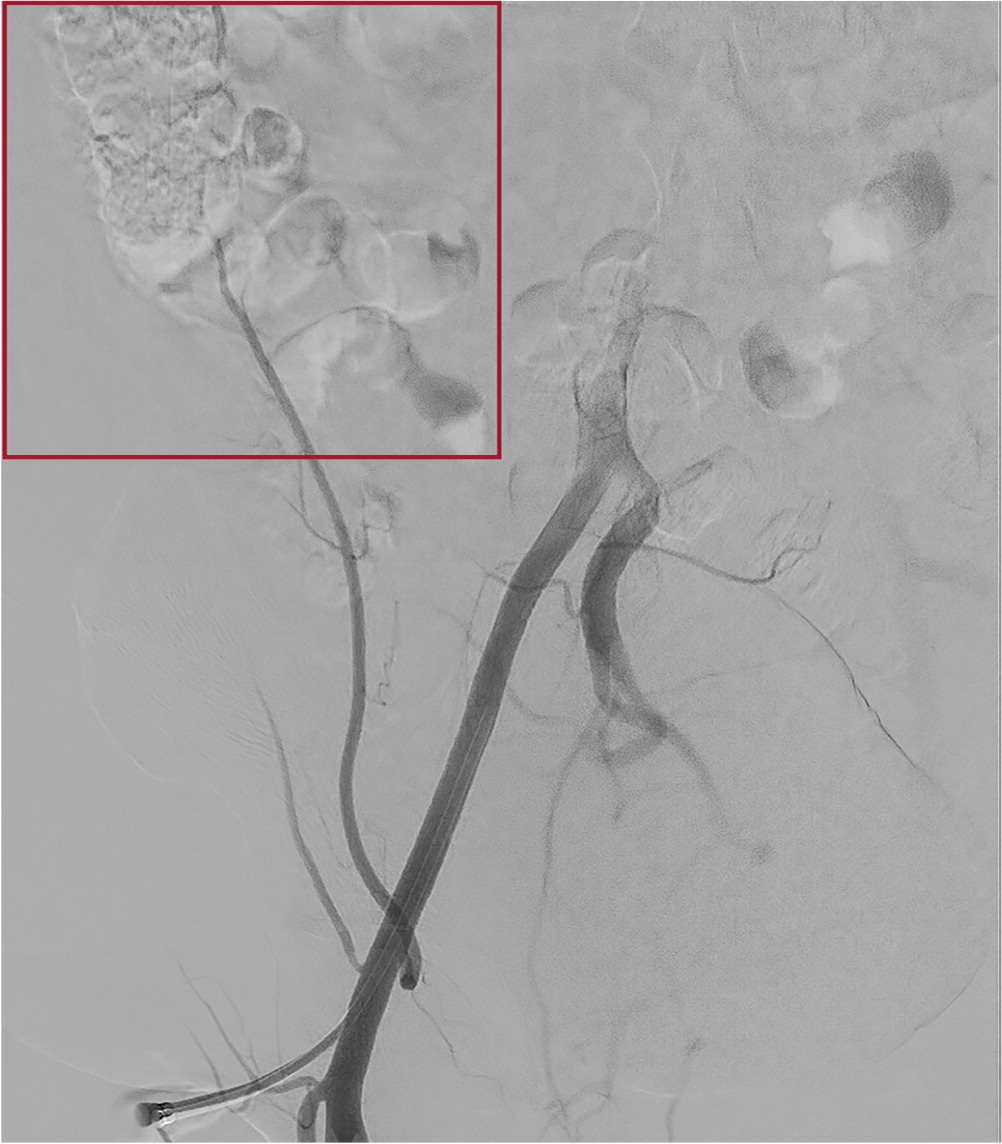
Am Fam Physician. 2022;106(2):online
To the Editor: A 47-year-old woman with a history of hypertension, type 2 diabetes mellitus, hyperlipidemia, morbid obesity, and heart failure with preserved ejection fraction presented to the emergency department with an acute episode of left-sided weakness. Magnetic resonance imaging of the brain revealed an infarction of the right middle cerebral artery. The patient was diagnosed with Moyamoya disease by her neurologist because of her history of strokes and was prescribed aspirin and a statin to help prevent future strokes. Moyamoya disease is defined as chronic, occlusive strokes of unknown etiology that are characterized by bilateral occlusion of the internal carotid artery and subsequent abnormal vasculature created in the brain. Diagnosis is by catheter angiography or magnetic resonance angiography showing stenosis of the internal carotid artery, anterior cerebral artery, or middle cerebral artery.
After further consultation with neurology and neurosurgery, computed tomography angiography of the head and neck showed a diffusely small-caliber right inferior cerebellar artery with stenosis or occlusion of the right paraclinoid internal carotid artery (Figure 1). The patient's symptoms worsened while being monitored in the hospital, with deteriorating left-sided hemiparesis and speech difficulties. She was immediately administered heparin (Lovenox) intravenously. After stabilization, the patient was transitioned to 5 mg of apixaban (Eliquis) twice per day and 81 mg of aspirin per day. The patient was discharged to a rehabilitation facility for physical therapy to regain some of her left-sided extremity motor and sensory function.

Common ischemic symptoms of Moyamoya disease include hemiparesis, dysarthria, aphasia, and cognitive impairment.1 Genetic testing is available for the linked mutations associated with Moyamoya disease.2 If detected early, surgical revascularization can be performed using the external carotid system by creating a direct bypass or pial synangiosis.3 Pial synangiosis reroutes a section of the artery from the surface of the scalp to revascularize the ischemic area of the brain. This patient had several previous strokes and associated debilitating symptoms; therefore, she was not a candidate for surgery. Management includes aspirin and clopidogrel (Plavix), with seizure prophylaxis and other precautions to prevent intracranial bleeds.4 Precautions include taking lifelong anticoagulation medications (i.e., apixaban) and antihypertensives, managing cholesterol with statins, and implementing dietary changes for a healthy lifestyle. Conservative management is not as beneficial as surgery; therefore, it is imperative to offer surgical interventions to patients with Moyamoya disease for a better prognosis. This rare case highlights the importance of further investigation in younger patients with a history of strokes.
